
Small Engine Showcase
By Canadian Rental Staff
Products technologyNew and cleaner engine technology makes your customers’ experience better.
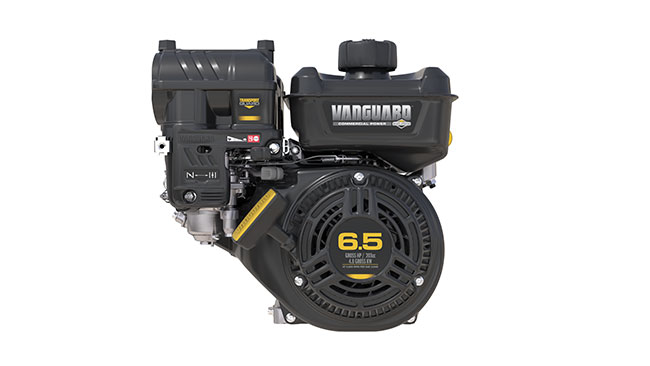
Better in all categories
vanguardengines.com
Vanguard has introduced the first in a complete line of all-new single-cylinder horizontal shaft commercial gasoline engines built from the ground up based on customer input. The new line of engines includes an advanced version of TransportGuard, Vanguard’s single ignition and fuel shutoff designed to prevent oil dilution during transport, and is backed by the support of 40,000 servicing dealers worldwide. The 6.5-gross-horsepower Vanguard 200 was designed to address customer needs, such as improved starting, less noise and vibration, reduced maintenance and better service and support. It performs well in each of those categories, boasting easy cold weather starting down to -20 F, 15 per cent less vibration and 40 per cent quieter performance than other models. Common maintenance activities such as air filter and oil changes have been significantly reduced in the Vanguard 200. The integrated cyclonic air filtration system comes standard and extends air filter maintenance intervals to up to 600 hours while oil change intervals are a recommended 200 hours. This means half as many air filter and oil changes as required by other brands, resulting in reduced maintenance costs and downtime. All power levels are stated as gross horsepower at 3,600 RPM per SAE J1940.
Special for rental
perkins.com
Perkins has launched a new range of Perkins Syncro engines designed specifically to address the unique challenges of the rental market. The Perkins Syncro 1.7 liter is a three-cylinder turbocharged option. The Perkins Syncro 2.2 liter four-cylinder engine comes in two options, one turbocharged and the other turbocharged and aftercooled. The Perkins Syncro 1.7 provides 39 horsepower with a maximum torque of 20 newton-meters at 1,800 RPM, with rated speeds up to 2,800 RPM. The Perkins Syncro 2.2 liter turbocharged aftercooled model has been boosted to 50 67 horsepower with a maximum torque of 208 Nm at 1,800 RPM. The turbocharged-only model offers up to 48 horsepower. All three engines meet U.S. Environmental Protection Agency Tier 4 Final emission standards. Design features make these engines particularly suited to the rental industry. They have a high-pressure fuel system that gives a clean combustion burn. This means the engine doesn’t require a diesel particulate filter or the addition of diesel exhaust fluid. Instead, the Perkins Syncro 1.7 and 2.2 liter engines use a simple, rear-mounted diesel oxidation catalyst after-treatment, which is service-free, meaning there is no machine downtime. It requires no regeneration or additional operator functionality – end users of skid steer loaders, aerial work platforms, lift booms, wheeled loaders, hydraulic excavators, rollers, and others can simply turn the machine on and get the job done.
In North America, Perkins offers rental houses the Perkins Rental Support Program that is fully customizable to improve rental fleet maintenance and return on investment. The program provides Perkins engine training, engine diagnostic capability and expertise to support Tier 4 engines and minimize downtime. Perkins Syncro 1.7 and 2.2 liter engines are made at Perkins’ Griffin, Ga., manufacturing plant.
Outsized torque
hatz-diesel.com
Hatz has introduced its new liquid-cooled three-cylinder diesel 3H50T engine in the fan-to-flywheel version as well as in the open power unit variant. The new engine model in the performance class under 19 kilowatts extends the product range of H-series engines that were specially developed by Hatz for current and future requirements on power, performance, reliability and international exhaust gas standards. With a displacement of only 1.5 liters and a maximum torque of 130 Nm the Hatz 3H50Tachieves superior torque for its class. The Hatz 3H50T achieves its output without an intercooler. It features a very compact construction without DPF delivering significant benefits particularly for use in compact machines. With its low weight and small installation dimension the performance data of the engine even exceeds many older engines in the 19- to 37-kilowatt class. This gives many machine manufacturers an outstanding alternative for planning their compact machines with small engine compartments and for reasonably upgrading existing machines to EU Stage V – with simultaneous safeguarding of previous investments in design and development. The new Hatz 3H50T engine satisfies current and future emission regulations, also including EU Stage V as well as EPA Tier 4 final. Due to its modern design and construction the engine achieves the specified values even without an additional diesel particulate filter. This makes the engine suitable for compact machines with restricted space conditions in which a diesel particulate filter is not possible. The Hatz 3H50T emits an extremely low particle mass that also achieves only a tenth of the limit value without any further exhaust emission after-treatment such as exhaust gas recirculation or diesel oxidation catalyst. For EU Stage V this is 0.4 grams per kilowatt hour. The Hatz 3H50T OPU is a plug-and-play solution that is the ideal choice particularly for manufacturers of compact machines that need engines fully ready for installation. Major examples of use include lifting platforms, hydraulic systems, drilling machines and stationary applications such as pumps and alternators. With its integrated and optimal design of the radiator, hoses and cabling as well as the electronics, the Hatz OPU concept greatly simplifies design and installation.
Perfect for compact applications
cummins.com
The 2.8-liter Cummins QSF delivers performance at 74 horsepower, which is comparable to that provided by larger engines up to 3.6 liters in an envelope size that’s similar to 2.2-liter engines used at 49 horsepower. High-pressure common rail fuel injection together with full-authority electronic controls and a Cummins waste-gated turbocharger combine to deliver a very impressive peak torque of 221 foot-pounds. This advanced technology enables the QSF2.8 to meet the near-zero emissions standards of Tier 4 Final/Stage IV using only cooled exhaust gas recirculation and its proprietary diesel oxidation catalyst. The same QSF2.8 engine without DOC meets Tier 3/Stage III emissions regulations for regions where those standards apply. The DOC is truly “fit and forget” technology – a totally passive system that never needs any form of regeneration as required by a diesel particulate filter. It also gives equipment designers the flexibility to mount components separately from the exhaust muffler or as part of a combined catalyst-and-muffler unit. Specifically designed for compact four-cylinder applications, the CCC benefits from Cummins Emission Solutions’ vast experience with DOC technology. The compact design of the QSF2.8 includes the proprietary Direct Flow air cleaner, which takes up significantly less space than conventional cylindrical air filters, and has enhanced dust-holding capacity, for longer service intervals. Innovative use of composite materials, together with a sculptured cast-iron block, give the QSF2.8-powered equipment a significant weight advantage at just 507 pounds. Maintenance is made simpler through remote mounting of the electronic control module for rapid plug-in diagnostics and data downloads using electronic tools such as the QuickCheck 5200.
Stage V ready
deere.com
The PowerTech EWX industrial diesel engine from John Deere produces 50 to 74 horsepower. The engine is ready to work meeting EU Stage V emissions regulations. This means OEM customers currently using a John Deere engine with a diesel particulate filter won’t have to re-engineer their machines to meet the requirements of Stage V regulations. John Deere has been using DPF technology since Interim Tier 4/Stage III B and is well positioned to help customers transition to the EU’s Stage V standard. The company has extensive experience with the development and integration of DPFs in both John Deere and OEM equipment, with more than 425 million DPF hours in the field. Waste-gated turbochargers are designed to develop more airflow at lower engine speeds to improve low-speed torque. The waste-gate control device bleeds off a portion of the exhaust flow at higher engine speeds. Waste-gated turbos deliver improved transient response and higher peak torque without compromising engine envelope size. They also provide the lowest installed cost across a given power range. These engines utilize a catalyzed exhaust filter that contains a diesel oxidation catalyst and a DPF. The DOC reacts with exhaust gases to reduce carbon monoxide, hydrocarbons and some particulate matter. The downstream DPF traps and holds the remaining PM. Trapped particles are oxidized within the DPF through a continuous cleaning process called passive regeneration. Passive regeneration occurs during normal operating conditions when heat from the exhaust stream and catalysts within the exhaust filter trigger the oxidation of the trapped PM. If passive regeneration cannot be achieved due to low temperature, load, or speed, then PM is removed using active regeneration — an automatic cleaning process controlled by the exhaust temperature management system.
Keeps grass out
kawasakiengineusa.com
Kawasaki has introduced an all-new engine and accompanying air filtration system. The FT730V-EFI is the first engine from Kawasaki to employ vortical air filtration, an air-intake methodology that significantly combats many of the ongoing issues faced by lawncare professionals as well as homeowners. VAF, which provides longer engine life due to its inherent debris-cleaning effects, also requires less maintenance as the pre-filter and filter can run for up to 50 hours before requiring cleaning. The VAF technology incorporates air intake methodology that is engineered to focus on getting clean air into the engine without also introducing external debris, such as loose grass clippings. This advanced, high-efficiency air intake system uses centrifugal air movement to move heavy grass, dust, and debris away from the air filter, then ejects accumulated debris out of the engine through a duckbill debris ejection valve. Once the ejection process is completed only fine dust is left, which is easily trapped in the filter. The benefits of this system are many, with cleaner intake air contributing to longer engine life, reduced maintenance, and improved performance. Grass entering the cooling air path system under normal mower use is easily removed through the large clean-out ports located over cylinder heads. The cover for these clean-out ports is neatly integrated into the VAF cover. Kawasaki’s new FT730V-EFI system employs an integrated e-governor that immediately adjusts engine power-to-load for maximum cutting power at higher speeds, cleaner mowing when units are used in heavy turf, as well as minimizing the need for re-cuts. The same EFI system is currently available on three other Kawasaki engine models from the company’s FX and FS product lines. Kawasaki’s single, sealed ECU— the heart of the company’s EFI system — is sufficiently protected to avoid exposure to weather, dirt, and vibration.
Natural gas solution
deutzamericas.com
With a legacy spanning six decades, the air-cooled Deutz 900 series is renowned as one of the most reliable and trusted diesel power plants in the world. Deutz Corporation expands on this legacy with the all-new TCG 914 series, a turn-key gas version of this successful engine targeted for agricultural, oil and gas sectors and applications demanding extremely robust, reliable power for continuous-duty operation. Engineered to operate using dry natural gas in three-, four-, or six-cylinder naturally aspirated or six-cylinder turbo- charged configurations, TCG 914 series gas engines accommodate power demands in the 32 to 114 horsepower range. TCG 914 Power Units include the basic engine with a belt-driven, high-efficiency cooling blower; a heavy duty skid base; and SAE 3 flywheel housing and 10-by-11.5-inch flywheel; a 12-volt electric starter and 12-volt alternator; a fully assembled and wired ignition system; an integrated programmable engine control unit; a Deutz safety shutdown control panel; and air intake manifold and catalytic converter for EPA-compliant versions and a heavy duty dry-type air cleaner.
Automatic decompression
engines.honda.ca
As the world’s largest engine manufacturer, Honda is recognized for its expertise and leadership in developing and making high quality engines that provide superior performance in every condition. When customers choose a product powered by a Honda engine, they know they will get an engine they can count on, now and in the future. Honda offers a wide variety of engines from a single-cylinder, 360-degree-inclinable 35cc model to a powerful twin-cylinder 690cc model. Honda’s overhead valve and overhead camshaft designs enhance combustion efficiency, help to reduce fuel and oil consumption and ensure excellent thermal balance. Also the durability, reliability and service life of the engine is extended. All Honda engines are equipped with OHV or OHC technology. To ensure your customers can start the Honda-powered products in your fleet all Honda engines are equipped with an automatic decompression system which enables easy starting. Honda stands behind all their engines by providing a three-year commercial warranty on all GX engines 100cc and larger.
Large displacements
kohlerengines.com
Sized to fit compact installations, Kohler Command PRO CS engines help deliver the goods with an advanced overhead valve, slant-cylinder design and a steel-forged crankshaft all in one durable, efficient, and reliable little package. The integrated exhaust system and oversized mufflers enable smooth, quiet operation. Large displacements and a high-inertia flywheel provide peak torque performance.
Print this page
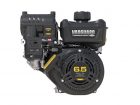
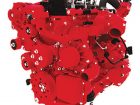
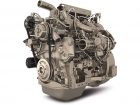
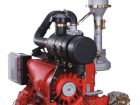
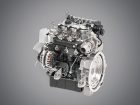
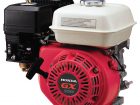
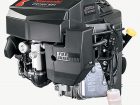
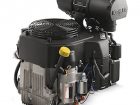
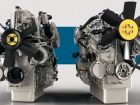
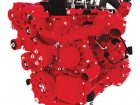
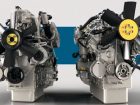
Leave a Reply